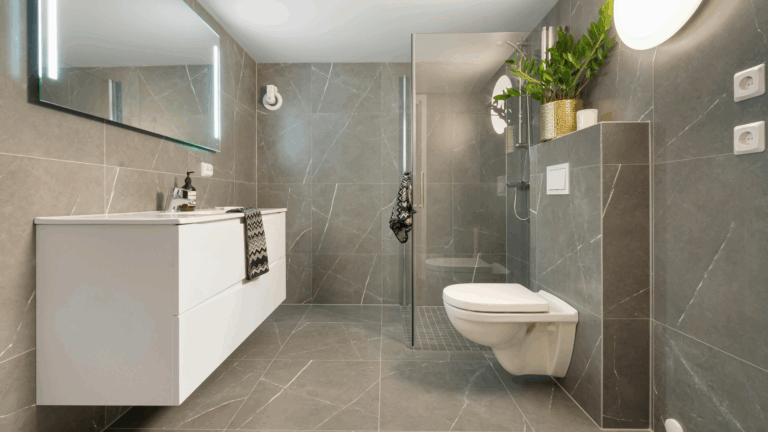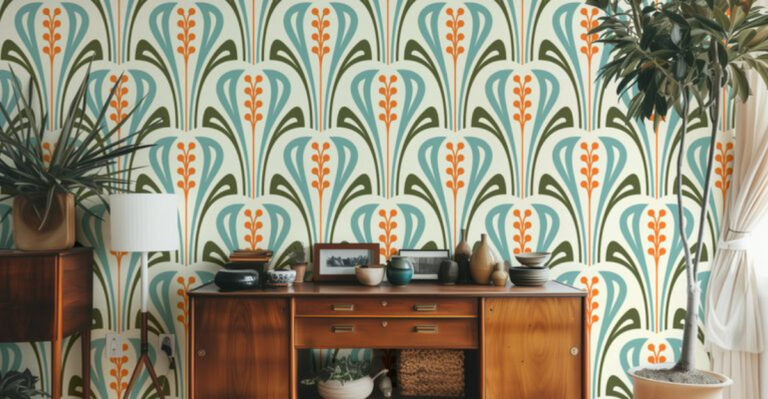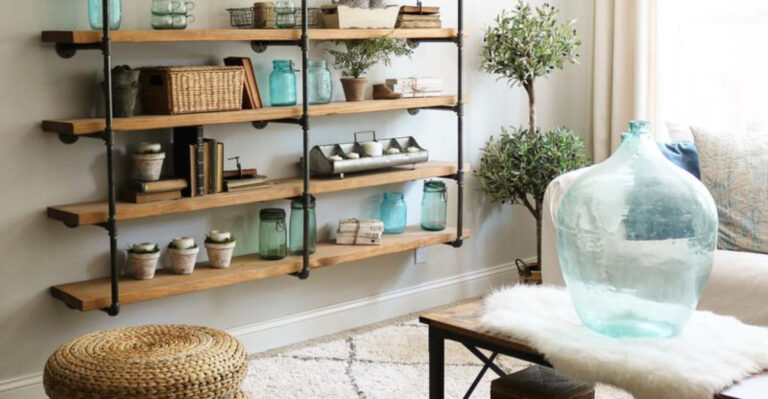17 Differences Between Art Nouveau And Art Deco You Need To Know
I used to think Art Nouveau and Art Deco were just fancy terms for old-timey design, but once I took a closer look, I was hooked.
One feels like stepping into a fairytale forest with flowing lines and floral details, while the other is all bold glamour and sleek geometry, think Great Gatsby vibes. These two styles may get mixed up a lot, but they couldn’t be more different in personality and inspiration.
If you’ve ever been drawn to vintage design but couldn’t quite put your finger on why, diving into the world of Art Nouveau vs. Art Deco is a game-changer.
1. Time Period Tells The Tale

Art Nouveau flourished from about 1890 to 1910, emerging as a reaction against academic art of the 19th century. Its organic forms captured the imagination during the Belle Époque era.
Meanwhile, Art Deco strutted onto the scene in the Roaring Twenties, reaching peak popularity between 1920 and 1940.
The style reflected the post-war optimism and technological advances of the Jazz Age, celebrating modernity with gusto.
2. Nature vs. Machine
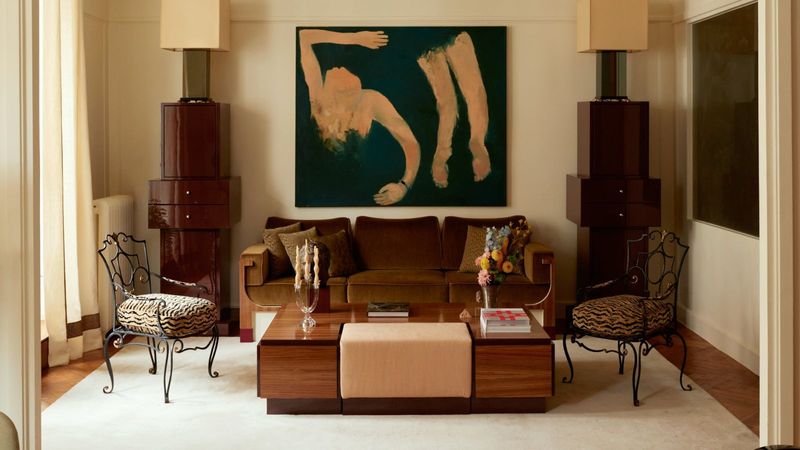
Where did Art Nouveau find its muse? In the twisting vines, unfurling ferns, and graceful lilies of the natural world. Artists deliberately mimicked the asymmetrical curves found in plants and flowers.
Art Deco, however, fell head over heels for the machine age. Its geometric patterns celebrated industrial progress, featuring symmetrical designs, zigzags, and streamlined forms that screamed speed and technology.
Man-made precision replaced natural randomness.
3. Curves Or Straight Lines?
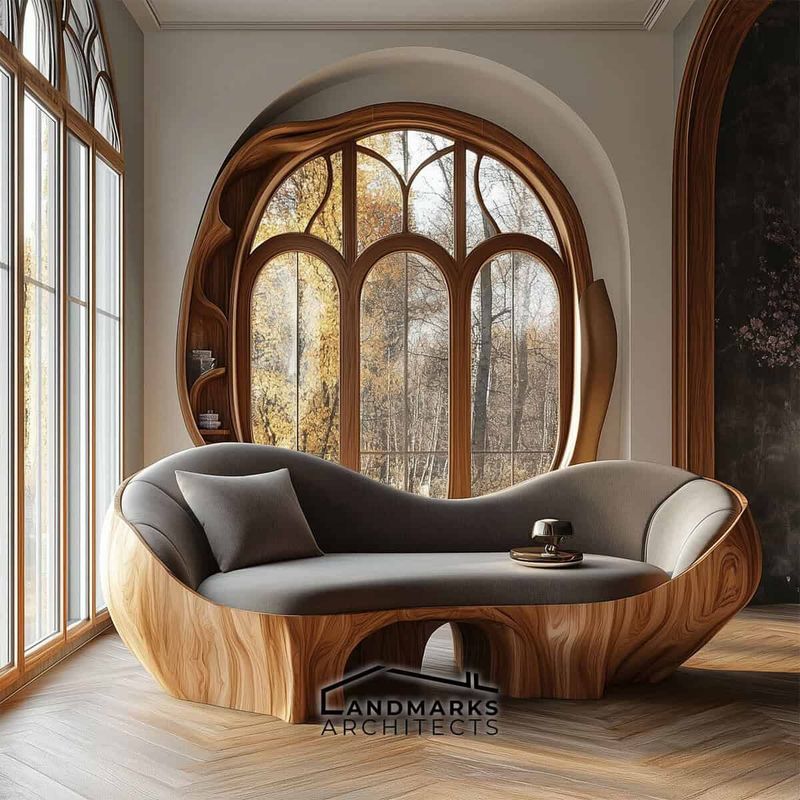
You can spot Art Nouveau from a mile away thanks to its swooping, whiplash curves that seem to dance across surfaces. These sinuous lines often resemble vines or tendrils reaching toward the sky.
If you’re looking at bold, straight lines arranged in rhythmic, geometric patterns, you’re firmly in Art Deco territory.
Angular zigzags, chevrons, and stepped designs replaced the flowing forms of the earlier style. Sometimes the difference is as simple as curves versus corners!
4. Color Palette Preferences
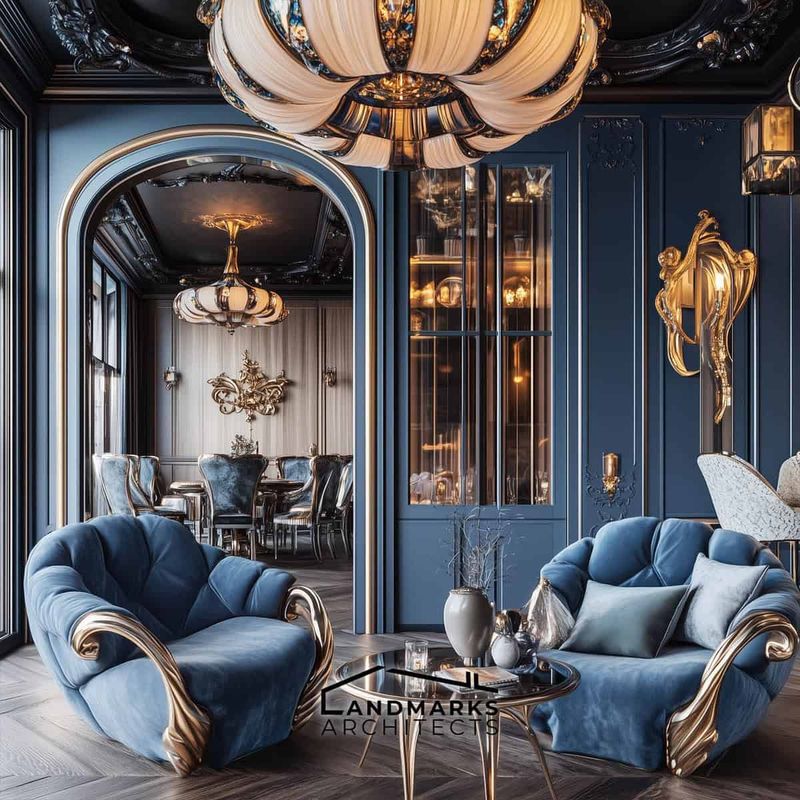
Art Nouveau embraces earth’s palette with muted, natural tones. Mossy greens, soft browns, and gentle violets dominate, creating a dreamy, somewhat mystical atmosphere in these designs.
Flip the switch to Art Deco and suddenly we’re swimming in bold, contrasting colors! Vibrant reds, electric blues, deep blacks, and metallic golds create dramatic statements.
The color combinations aren’t subtle – they’re meant to grab attention and make a statement about modern confidence.
5. Asymmetry Meets Symmetry
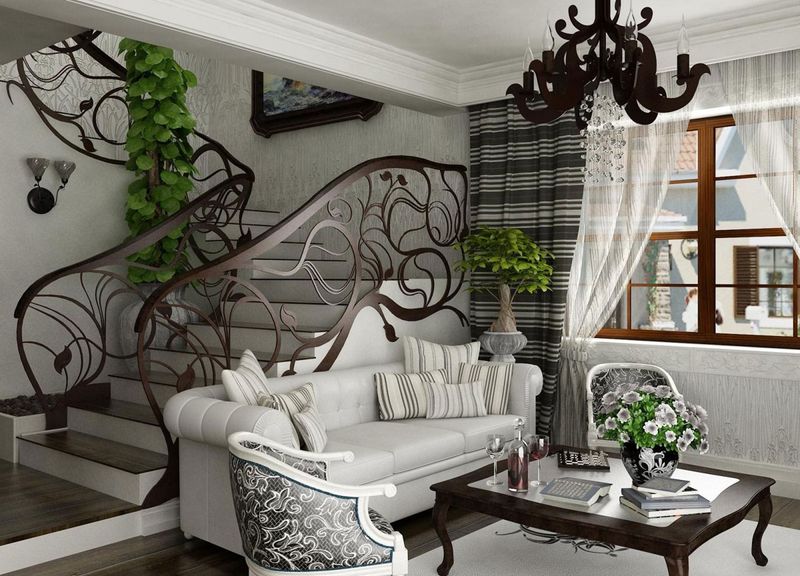
If balance feels a bit off-kilter but somehow still works beautifully, you’re likely looking at Art Nouveau. This style embraced asymmetrical compositions that mimic nature’s imperfect yet harmonious arrangements.
Art Deco designers would never! They insisted on perfect symmetry and balance in their work.
The satisfaction of seeing everything precisely aligned speaks to the movement’s fascination with order, control, and mathematical precision – qualities valued in the machine age.
6. Women In Art: Mystical Or Modern?
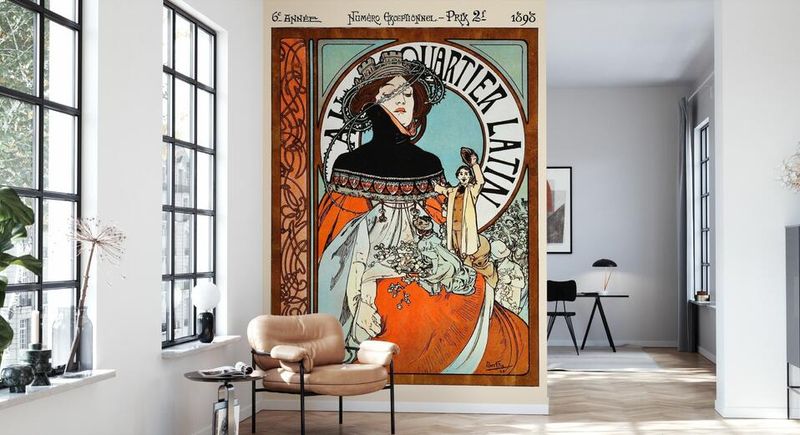
Women appeared as mystical, ethereal beings in Art Nouveau. Long-haired nymphs with flowing garments merged with natural elements, creating dreamlike figures that seemed one with nature itself.
Jump forward to Art Deco, and women transformed into symbols of modernity! Short-bobbed flappers exuded independence and strength.
Female figures became athletic, confident, and stylized – no longer mystical but thoroughly modern and ready to take on the world.
7. Handcrafted vs. Mass-Produced
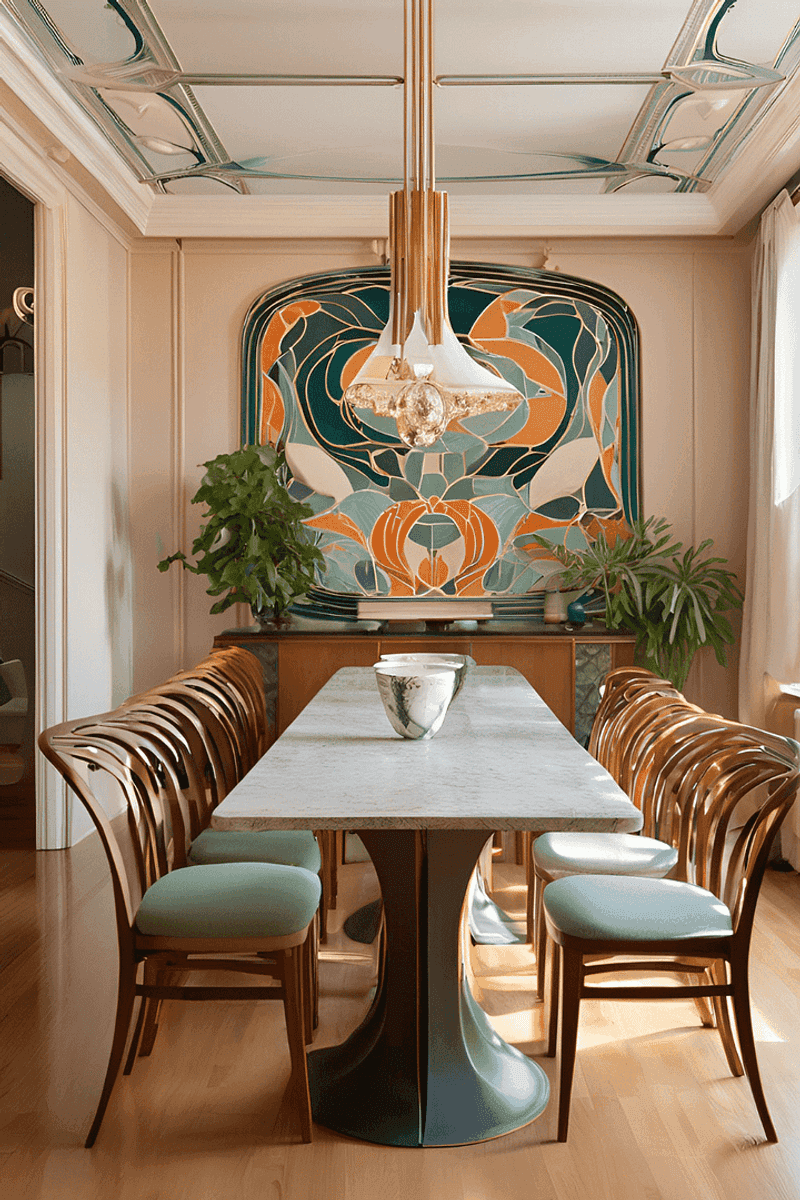
Craftspeople of the Art Nouveau movement prided themselves on handmade, one-of-a-kind pieces. Each item showcased intricate details that could only come from countless hours of painstaking work by skilled artisans.
Art Deco, born in the industrial age, embraced new manufacturing techniques. While luxury items still existed, the style also lent itself to mass production, making stylish goods accessible to middle-class consumers for the first time.
8. Materials Matter
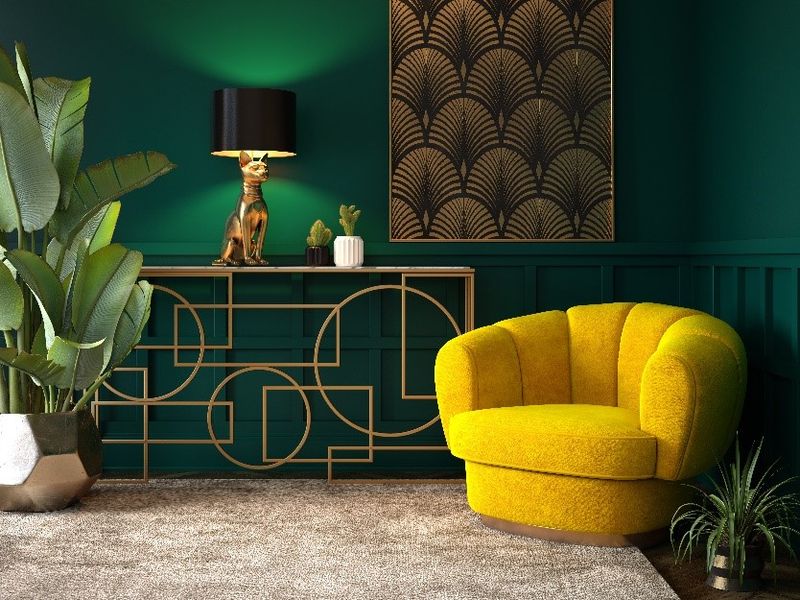
Art Nouveau artists loved exotic woods, stained glass, and wrought iron. These materials could be manipulated into organic shapes and allowed for the flowing forms that defined the style.
Meanwhile, Art Deco introduced materials that screamed modernity! Chrome, stainless steel, inlaid wood, lacquer, and Bakelite plastic represented industrial progress.
Materials with high shine and reflective qualities became particularly popular for their ability to create dramatic light effects.
9. Flowers Or Fountains?
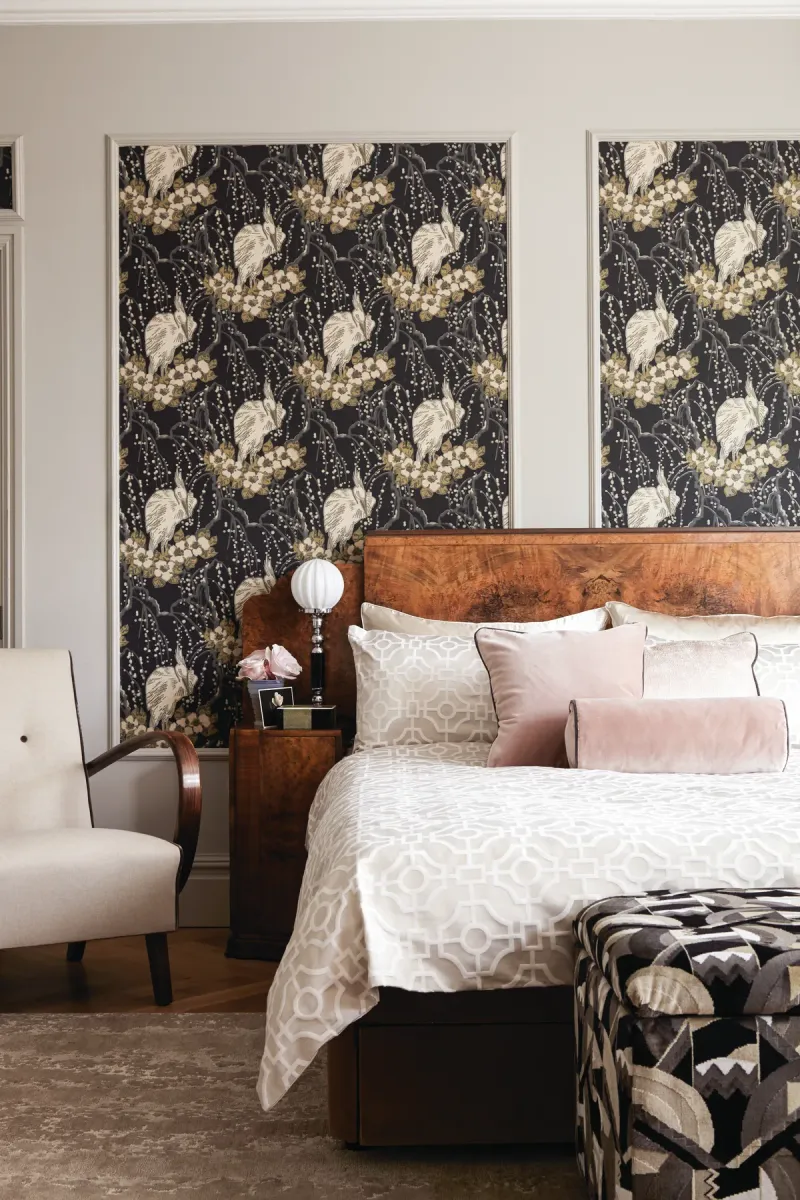
Flowers dominated Art Nouveau motifs – particularly irises, orchids, and water lilies. These weren’t just decorative elements but symbols of nature’s cycles and organic beauty.
Art Deco preferred stylized fountains, sunbursts, and lightning bolts as recurring motifs. These symbols represented energy, movement, and technological progress.
Even when natural elements appeared, they were highly simplified and geometricized rather than realistically portrayed.
10. Influences And Inspirations
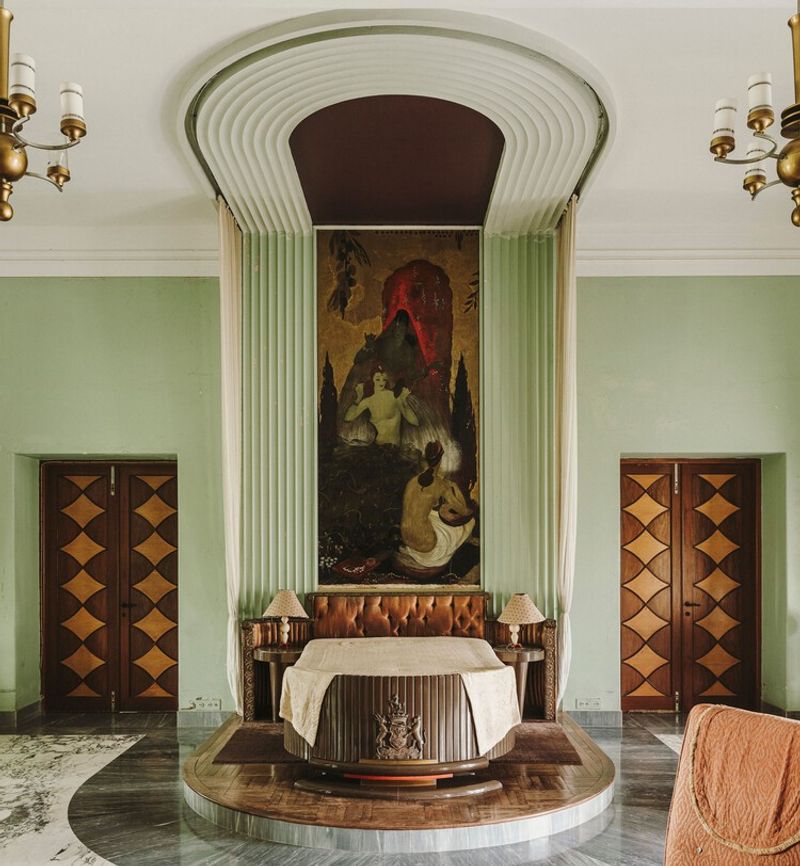
Japanese woodblock prints heavily influenced Art Nouveau with their flat perspectives and nature themes. When Japan opened to Western trade, their artistic style created a revolution in European design sensibilities.
Art Deco pulled inspiration from ancient civilizations but with a twist! Egyptian motifs (after King Tut’s tomb discovery), Aztec patterns, and African tribal designs were all simplified and geometricized.
Cubism, Fauvism, and Futurism art movements also contributed to Art Deco’s distinctive look.
11. Architects With Attitudes
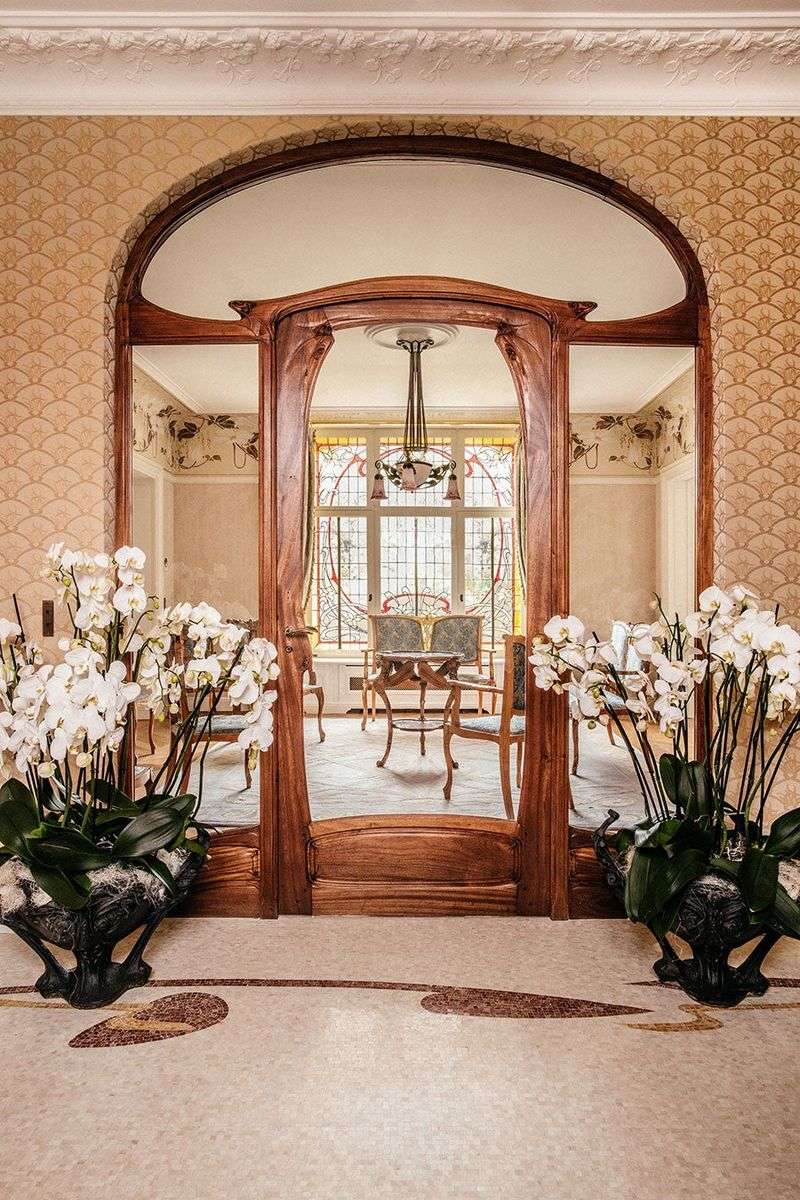
Antoni Gaudí and Victor Horta, champions of Art Nouveau architecture, created buildings that seemed alive. Their structures featured undulating facades, organic-shaped windows, and nature-inspired columns that defied traditional building conventions.
Art Deco architects like William Van Alen (Chrysler Building) and Raymond Hood focused on verticality and streamlined forms.
Their skyscrapers reached dramatically upward with setback designs that created a wedding-cake effect, embodying the era’s optimism and upward mobility.
12. Furniture Forms
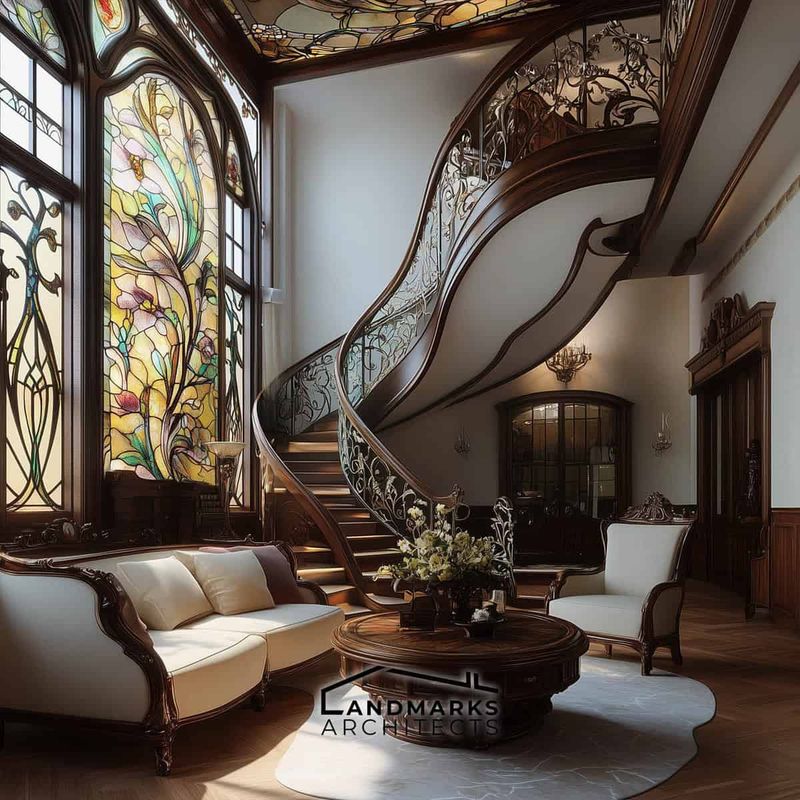
Louis Majorelle crafted Art Nouveau furniture pieces that seemed ready to sprout leaves. Chairs featured backs that curved like plant stems, while cabinet legs resembled tree roots gripping the floor.
Jump to Art Deco, and furniture by designers like Émile-Jacques Ruhlmann took on clean, geometric forms. Exotic wood veneers in dramatic patterns adorned pieces with sharply defined edges.
Comfort wasn’t sacrificed, but every curve was controlled and purposeful rather than organic and free-flowing.
13. Glass Gets A Makeover
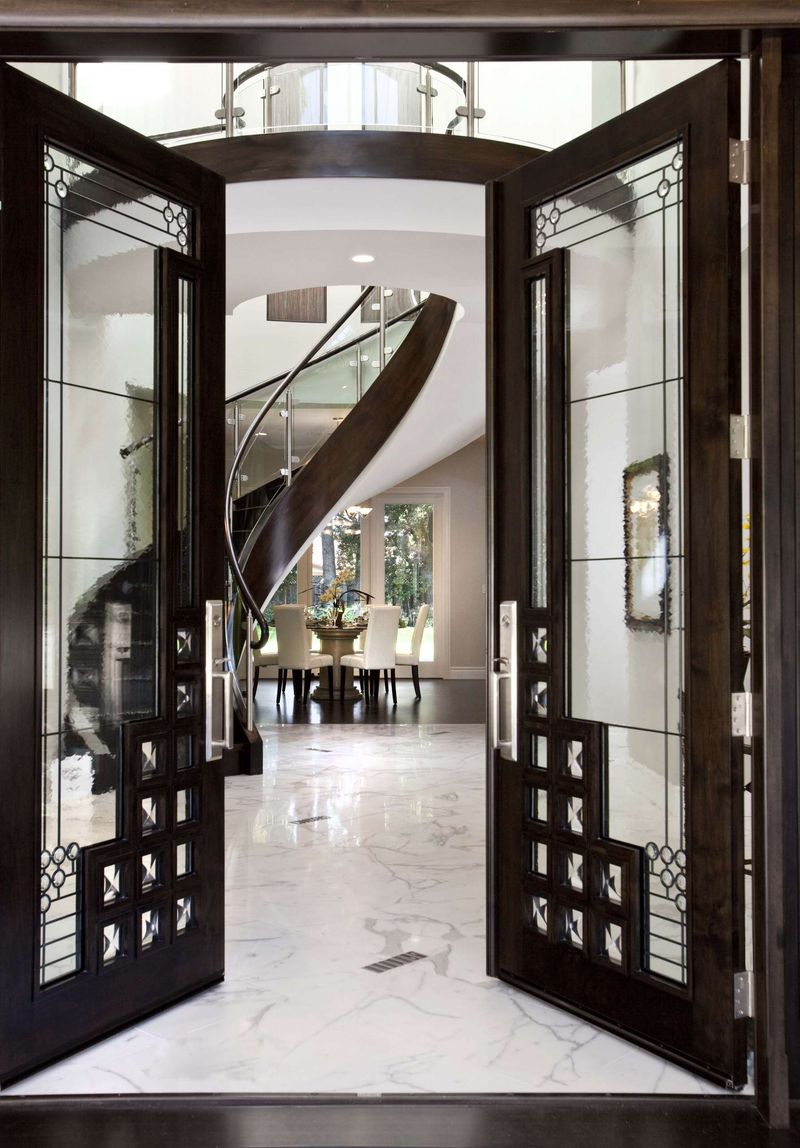
Louis Comfort Tiffany transformed glass art during the Art Nouveau period. His iridescent surfaces and nature-inspired lamp designs featured dragonflies, wisteria, and peacock feathers rendered in glowing, jewel-toned glass pieces.
René Lalique, who transitioned from Art Nouveau to Art Deco, changed his glass style completely. His later Art Deco vases and car mascots featured frosted glass with geometric patterns and stylized figures.
Clean lines replaced organic forms in these stunning modern pieces.
14. Poster Power

Alphonse Mucha created Art Nouveau posters featuring dreamy women with flowing hair surrounded by intricate botanical borders.
His advertisements for products and theater productions became art pieces in their own right. Art Deco posters by artists like A.M. Cassandre took a boldly different approach.
Streamlined images of trains, ocean liners, and automobiles conveyed speed and power through simplified forms and dramatic perspectives. Text and image worked together as unified geometric compositions.
15. Interior Decoration Distinctions
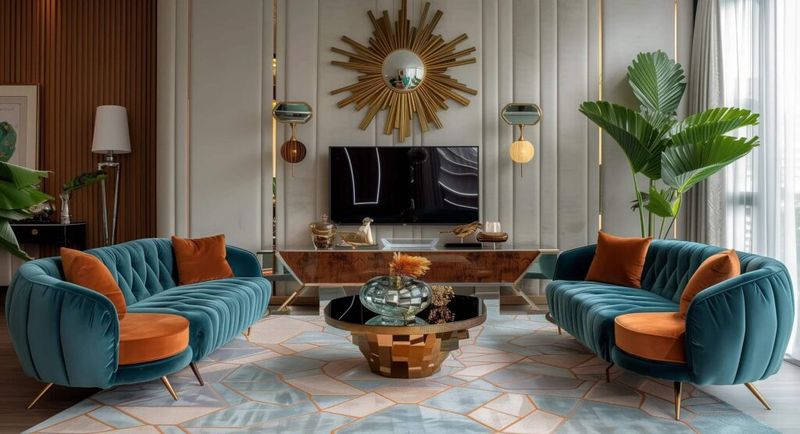
Art Nouveau interiors wrapped occupants in nature-inspired environments. Wallpapers featured repeating patterns of plants, rooms included stained glass with organic motifs, and even functional elements like radiator covers transformed into artistic statements.
Art Deco interiors emphasized luxury through simplicity. Mirrored surfaces, metallic accents, and exotic materials created dramatic, theatrical spaces.
Furniture was arranged symmetrically, often featuring built-in pieces that maintained clean lines throughout the room.
16. Lighting Shows The Light
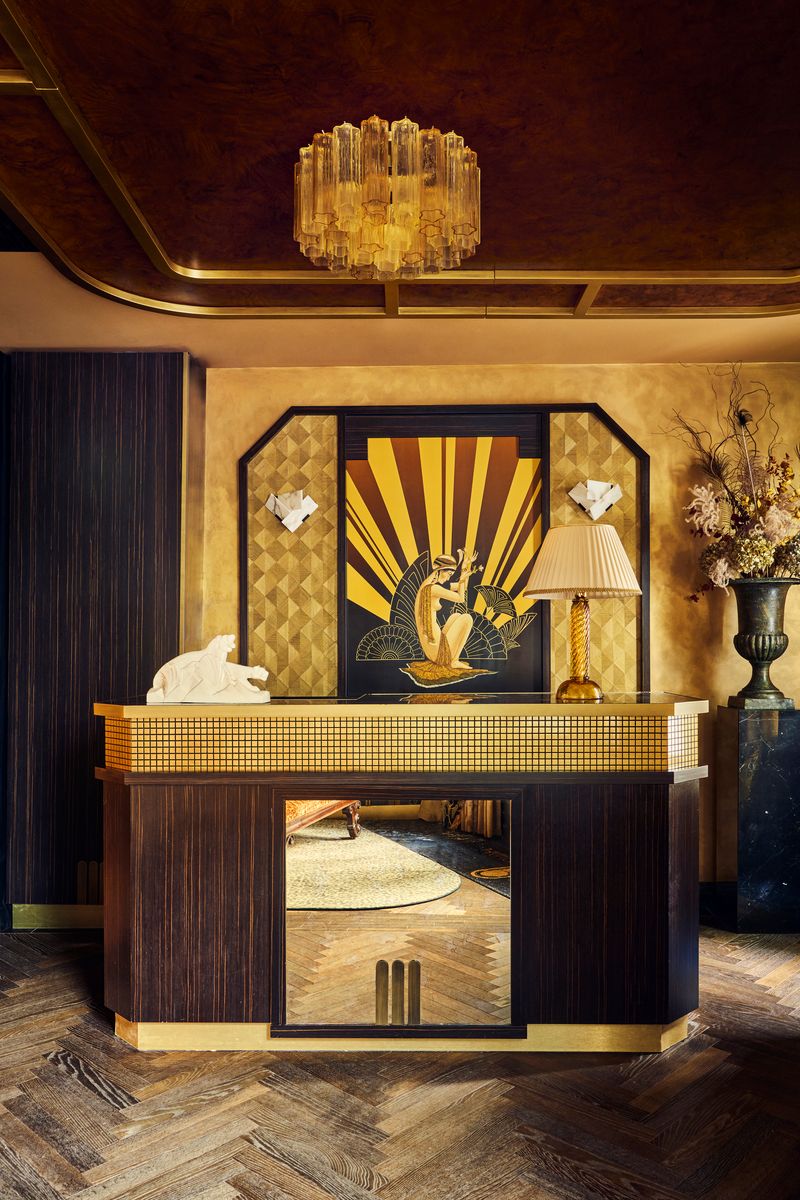
Art Nouveau lamps seemed alive with light! Base designs resembled plant stems or tree trunks, while shades often took the form of flower blooms or featured nature scenes in stained glass.
Art Deco lighting fixtures made bold geometric statements. Stepped designs, sunrise motifs, and angular forms created dramatic shadows. Materials like frosted glass, chrome, and Bakelite emphasized the modern manufacturing techniques available in the period.
17. Philosophical Foundations
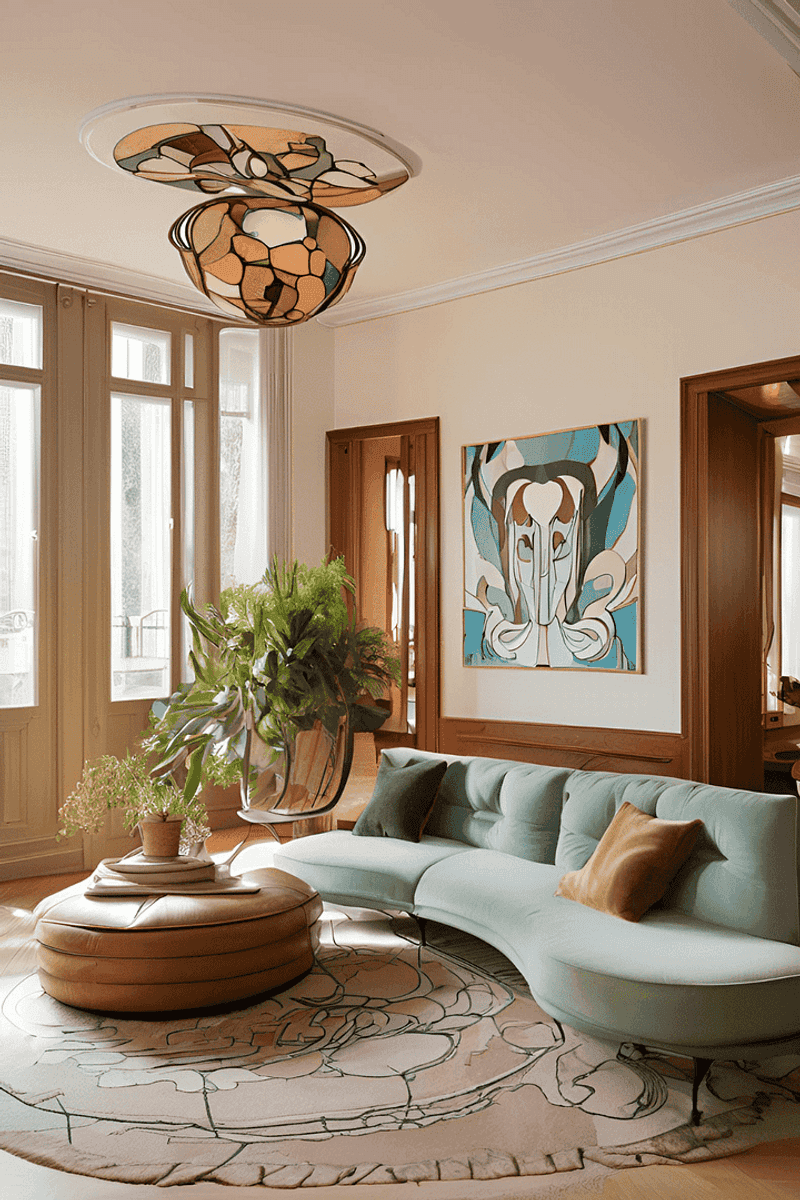
Art Nouveau emerged as a response to industrialization, with artists seeking to preserve craftsmanship and natural beauty in an increasingly mechanized world. The style represented a romantic, somewhat nostalgic worldview.
Art Deco enthusiastically embraced the machine age and all it offered! The style celebrated progress, speed, and technological achievement.
While still concerned with beauty, Art Deco found it in efficiency, precision, and the excitement of modern urban life.


